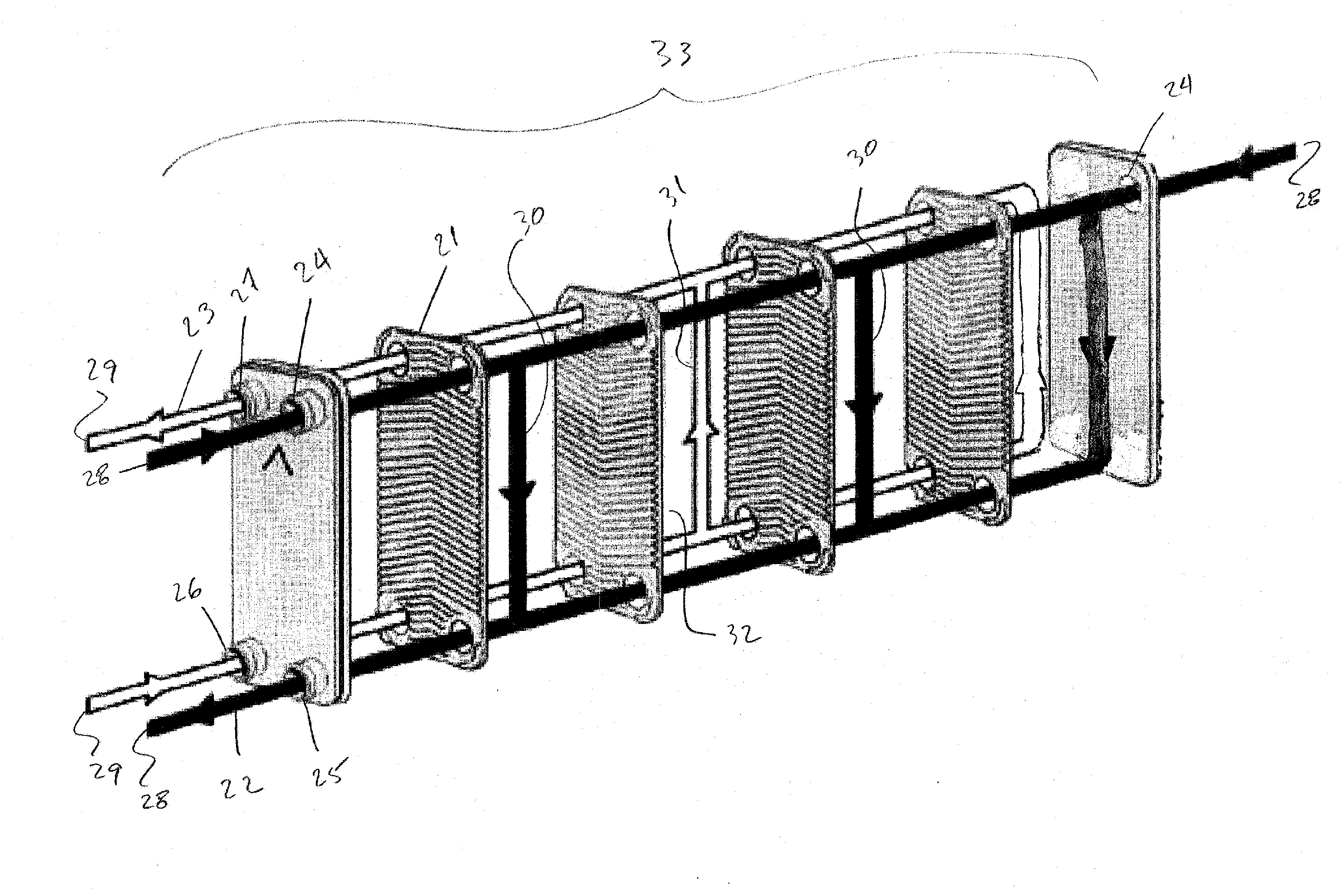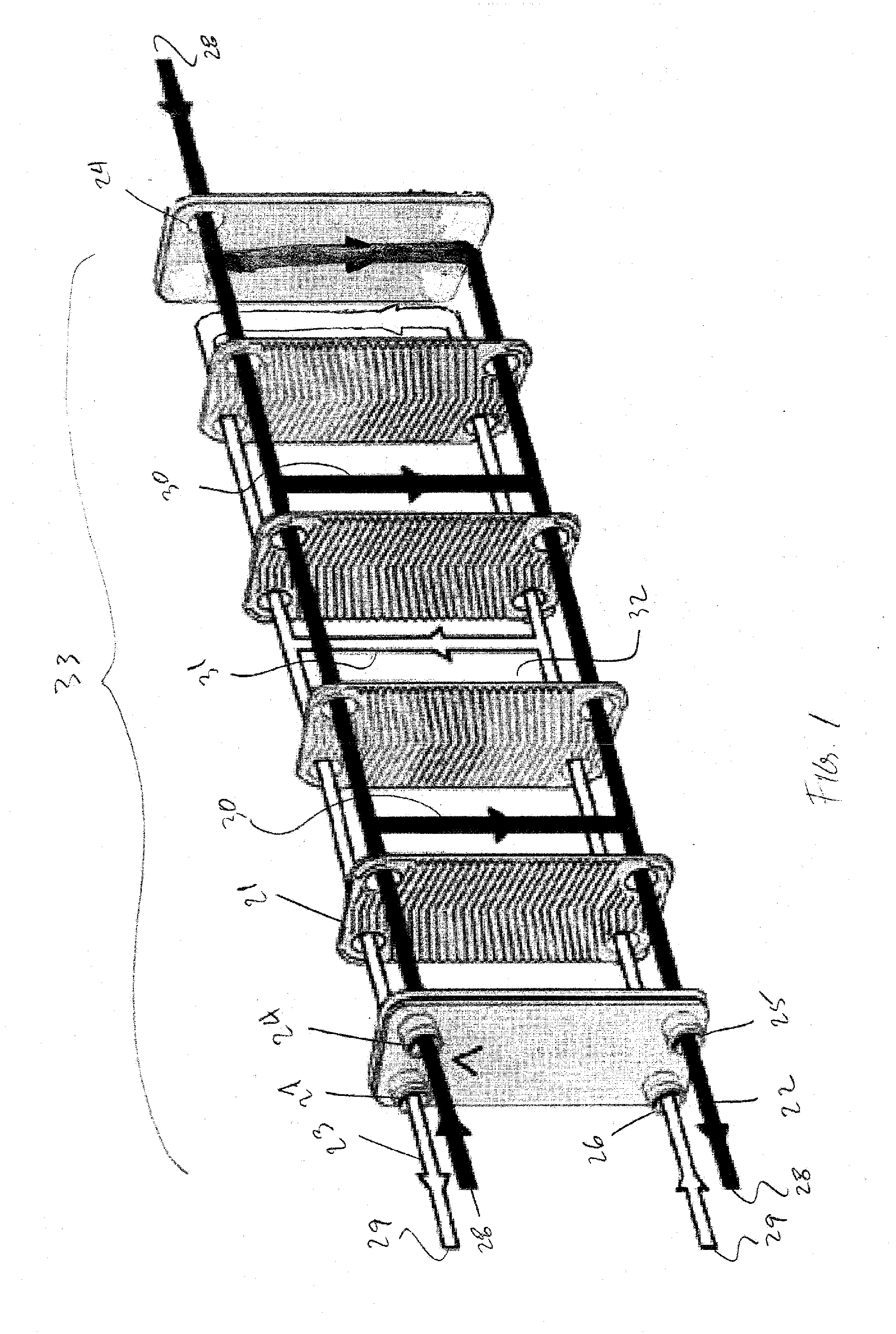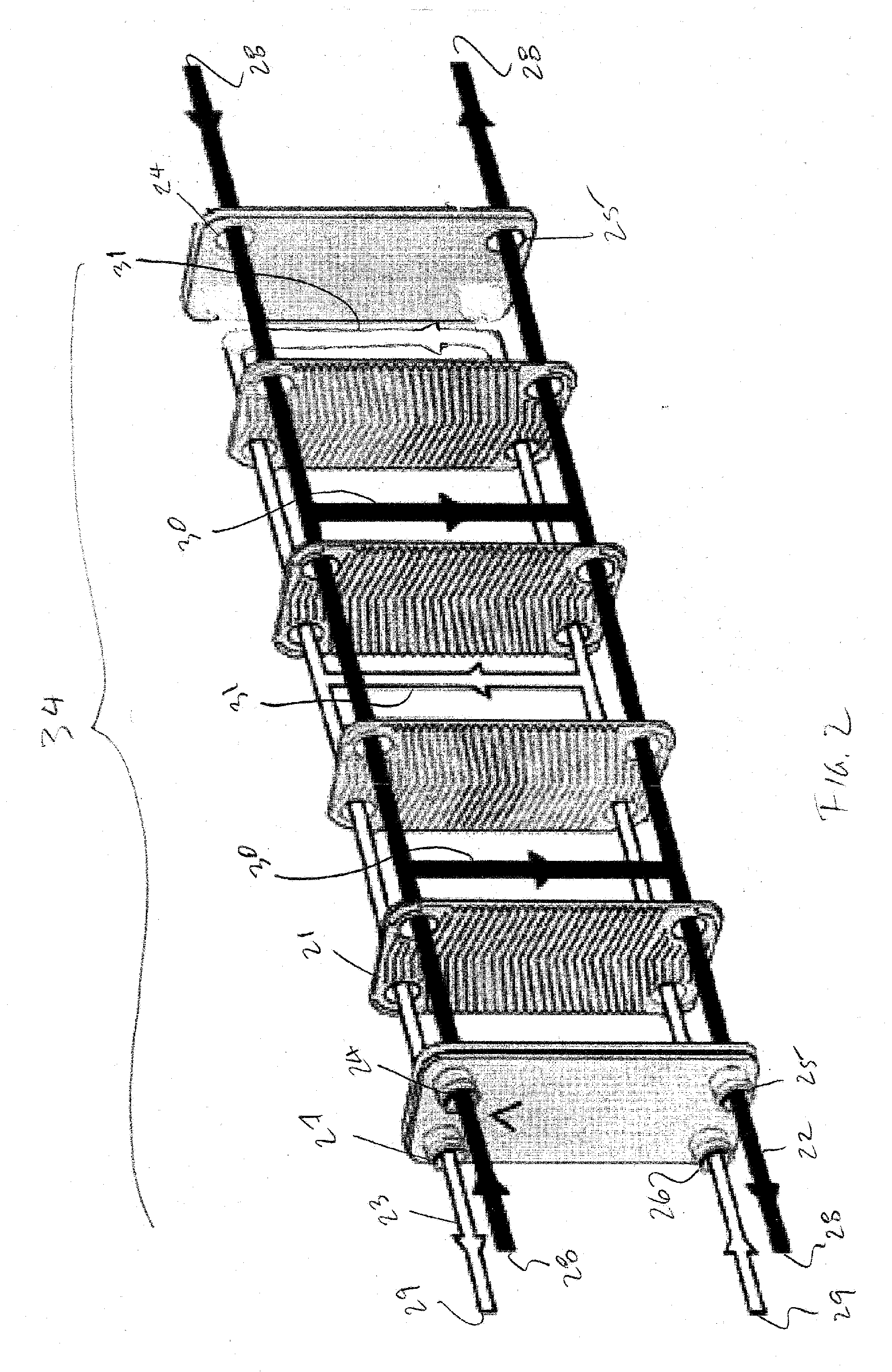Double inlet heat exchanger
- Summary
- Abstract
- Description
- Claims
- Application Information
AI Technical Summary
Benefits of technology
Problems solved by technology
Method used
Image
Examples
first embodiment
[0014]In FIG. 1, the invention is illustrated. This view is an exploded view of one embodiment. Specifically, in this one embodiment, a refrigerant double inlet single outlet system 33 is shown.
[0015]Referring to FIG. 1, a series of heat exchanger plates 21 are arranged to form a plate heat exchanger 33.
[0016]First fluid refrigerant 22 enters the device along first fluid flow paths 28 at first fluid inlet ports 24 and exits the device at first fluid outlet port 25. In this embodiment, the device includes at least two inlet ports, 24, and one outlet port 25. The second fluid to be conditioned 23, which may be a liquid such as water, or water-containing mixture, or compounds, enters the device through a second fluid inlet port 26, along second fluid flow path 29, and exits the device at second fluid outlet port 27.
[0017]Typically, the first fluid refrigerant 22 and the second fluid to be conditioned 23 travel through the device through alternate heat exchanging plate gaps 32 such that...
second embodiment
[0020]In FIG. 2, the invention is illustrated. In this embodiment, as in the previous embodiment, first fluid refrigerant 22 enters the heat exchanger 34 at two entrance points 24, on opposite sides of the heat exchanger. However, in this embodiment, the refrigerant exits the heat exchanger at two first fluid outlet ports 25.
[0021]It has been discovered that in both the dual inlet / single outlet, and dual inlet / double outlet embodiments, the prior art problem of maldistribution of refrigerant temperatures and flow with resulting maldistribution of heat throughout a plate heat exchanger is reduced or eliminated. Heat is thereby more efficiently exchanged across the length and breadth of each heat exchanging plate 21, which ultimately results in a reduced-size plate heat exchanger having the same heat exchange capacity as a physically larger plate heat exchanger of the same configuration. Reductions in pressure drop through the exchanger is also realized by this configuration.
[0022]FIG...
PUM
 Login to View More
Login to View More Abstract
Description
Claims
Application Information
 Login to View More
Login to View More - R&D
- Intellectual Property
- Life Sciences
- Materials
- Tech Scout
- Unparalleled Data Quality
- Higher Quality Content
- 60% Fewer Hallucinations
Browse by: Latest US Patents, China's latest patents, Technical Efficacy Thesaurus, Application Domain, Technology Topic, Popular Technical Reports.
© 2025 PatSnap. All rights reserved.Legal|Privacy policy|Modern Slavery Act Transparency Statement|Sitemap|About US| Contact US: help@patsnap.com



